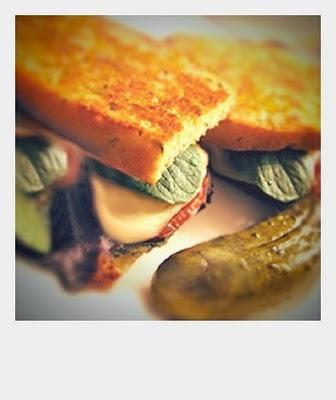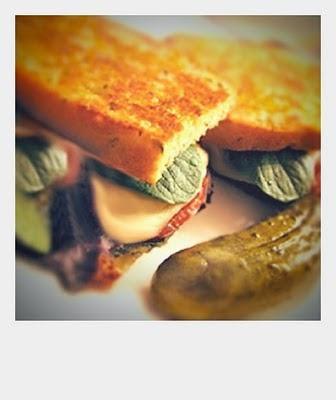By Meet Karina

The Gluten-Free Diet Cheat-Sheet: How to Go G-Free
How to Begin a Gluten-Free Diet
Foods to avoid:
Gluten is the elastic protein found in wheat, rye, barley, durum, einkorn, graham, semolina, bulgur wheat, spelt, farro, kamut, and triticale. Commercial oats also contain gluten due to cross contamination in processing (see more on gluten-free oats below).
Recipes that use flour (bleached white flour, whole wheat flour, cracked wheat, barley, semolina, durum, spelt, farro, kamut, triticale) or vital wheat gluten are not gluten-free.Semolina, durum, spelt and whole wheat pasta, including cous cous and ramen noodles, are not gluten-free.Beer, ale and lager are not gluten-free. Brats, meats and sausage cooked in beer are not gluten-free.Malt vinegar, malt flavorings and barley malt are not gluten-free.Recipes calling for breadcrumbs, breaded coatings, fried onion rings, flour dredging, bread and flat bread, croutons, bagels, croissants, flour tortillas, pizza crust, graham crackers, granola, cereal, wheat germ, wheat berries, cookie crumbs, pie crust pastry, crackers, pretzels, toast, flour tortillas, sandwich wraps and lavash, or pita bread are not gluten-free.The vegan protein sub seitan (made with vital wheat gluten) is not gluten-free; and some tempeh is not gluten-free (you must check). Flavored tofu may or may not be gluten-free due to seasoning. Injera bread (traditionally made from teff flour) and Asian rice wraps may be gluten-free, but are not necessarily gluten-free (check labels, always).Barley enzymes used in malt, natural flavors, and to process some non-dairy beverages, chocolate chips, coffee, teas, and dessert syrups (and even some brown rice syrups) are not gluten-free. Always check.
Gluten is sneaky.
Hidden gluten can be found in soy sauce, tamari style stir-fry sauces, marinades, gravy, gravy mixes and gravy packets, broth and bouillon, cooking sauces and instant soups, salad dressings, cured meats, sausage, hot dogs, vegan hot dogs and "fake" meat, sausages and burgers, self-basting poultry, flavored and herb cheeses. Watch for spice blends including curry powder, dry mustard (often combined with flour).Read labels on canned and prepared soups, tomato paste, sweeteners, confectioner's powdered sugar and brown sugar, prepared beverages, flavored and instant coffees, herbal teas (watch for barley), roasted, flavored or spiced nuts, jerky, flavored yogurts, puddings and ice creams, chocolate and chocolate chips, cocoa powder and instant cocoa mixes, flavored vinegars (avoid malt vinegar, and fake "balsamic" flavored vinegar), cooking wines, flavored liqueur and liquor, wine coolers (malt).
Always read labels. Call the manufacturer.
Eating out is very risky. Be aware that delis and restaurants often add flour to egg omelettes, and breadcrumbs to tuna salad. Gluten-free pasta is sometimes boiled in the same water used for standard pasta. Avoid French fries and fried foods fried in the same oil with glutenous breaded foods (fried onion rings, batter coated fish and chicken).
What is gluten-free?

Diet Cheat-Sheet: How to Go G-Free
GLUTEN-FREE FOOD LIST:
Alternative grains, flours, starches and thickeners that are safe* for celiac and wheat allergies include:Corn, grits, polenta and cornmealBuckwheat, buckwheat cereal, kasha and buckwheat flourRice- white, brown, risotto, basmati, jasmine, sticky rice, rice cerealRice flour- white rice, sweet (glutinous) rice and brown rice flourQuinoa, quinoa cereal flakes, and quinoa flourMillet and millet flour Sorghum flourAmaranth and amaranth flourCertified gluten-free oats and oatmeal (milled from a dedicated GF source and labeled as such)Coconut flourTeff flourNut meals and flours- almond, chestnut, pecan, cashewChick pea flour, garbanzo flour, soy (soya) and bean flourTapioca starch/tapioca flour (aka manioc)Potato starch (used in baking)Potato flour (used sparingly as a thickener)Sweet potato and yam flourArrowroot starchCornstarch
Chestnut flour
*Safe if milled in a dedicated GF facility/source. Check with companies to determine if they are using allergen safety protocols, and a gluten-free facility.Pre-made ingredients that are usually safe for celiac include:100% corn tortillas and taco shells with a gluten-free labelPre-made polenta rolls with a gluten-free labelUnflavored mochi100% Corn pastaQuinoa and corn pastaSoy pasta (if it states gluten-free)Brown and white rice pasta, rice noodles, rice glass noodles100% buckwheat soba noodles (check label)Rice paper, rice and tapioca rice paper wraps (check label)100% nut butters- almond, peanut, cashew, pecan100% seed butters- sesame tahini, sunflower and hemp seed butterGluten-free beer and lager made from rice, sorghum or a non-gluten grain.
As always, call the manufacturer to determine cross contamination probability. Some companies (including bakeries) are not 100% gluten-free, despite a GF label (frustrating, I know). Call and discuss best manufacturing practices and allergen safety protocols.
About baking GF recipes:
When it comes to converting your favorite baking recipes to gluten-free, a simple one-to-one flour substitution will not yield the same results as your recipe based on wheat flour.Gluten is a giving, stretchy ingredient that supports rise, structure, texture and kneadablity. It takes more than a single gluten-free flour replacement to make a cake, bread, muffin or cookie recipe work. A combination of gluten-free flours and starches with some extra egg whites or leavening, and xanthan gum added to improve viscosity is necessary for optimum results.*Note on oats: Read Shelly Case on the gluten-free status of oats at Allergic Living. Read about the latest findings on gluten-free oats here, from Jules Shepard

